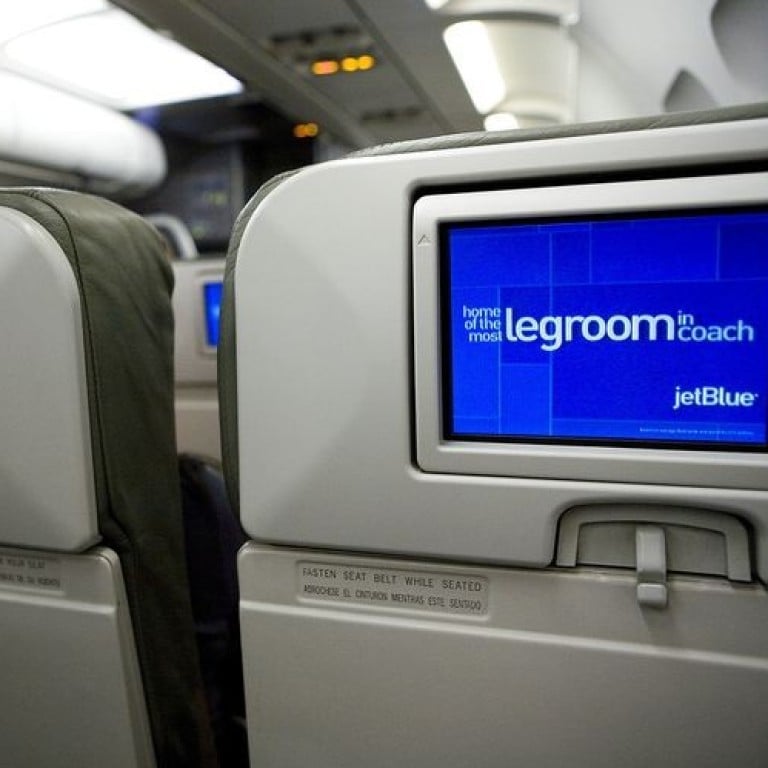Is in-flight entertainment over? US airlines are stripping seat-back screens as Wi-fi coverage picks up

Airlines can now use your smartphone or tablet as a portal for films, television shows and video games, avoiding the need for expensive hardware in every seat – but does this mark the end of an aviation era?
In the quest to command higher fares and traveller loyalty, airlines are constantly scrambling to market their on-board services as better than the competition. These days, one highly visible battleground is directly in front of you: the in-flight entertainment screen.
While such displays are firmly entrenched aboard long-haul fleets, helping pass the hours during ocean crossings, there’s a deep difference of opinion among United States carriers when it comes to domestic single-aisle jets. The advent of on-board Wi-fi has given airlines the option of using your smartphone or tablet as a portal for films, television shows and video games, avoiding the expense of costly hardware at every seat.
Screens on single-aisle fleets are rare in Europe, but still relatively common in Asia among the full-service carriers … The reason for replacing the screen is the ubiquitous smartphone
Three of the largest US airlines – American Airlines, United Airlines Holdings and Alaska Air Group – are removing screens from their domestic workhorses, the family of medium-range 737 and A320 aircraft sold by Boeing Co and Airbus SE, respectively. Southwest Airlines has never equipped its Boeing 737s with screens and said it has no plans to change course.

Meanwhile, Delta Air Lines and JetBlue Airways are betting screens with audio-video on demand will lure domestic travellers. A three-year-old Delta subsidiary, Delta Flight Products, has merged the two worlds, developing a wireless streaming product and seat-mounted tablet screens for many of the airline’s new deliveries, dispensing with the weight associated with traditional, hard-wired displays.
The split is evident internationally as well: screens on single-aisle fleets are rare in Europe, but still relatively common in Asia among the full-service carriers.
The reason for replacing the screen is the ubiquitous smartphone. On-board streaming services are seen by some airlines as an obvious way to trim expenditures. For others, that sinking feeling passengers get when they realise there’s no screen in front of them presents a marketing opportunity.
Airlines that are jettisoning screens say it’s not just about high installation costs. Those screens add weight, increasing fuel costs. What’s more, the technology in a screen typically becomes obsolete much faster than the gadget in your pocket. Kurt Stache, American Airline’s senior vice-president of marketing and loyalty, says maintaining the screens isn’t cheap, either: “That’s clearly a pain point after a couple of years.” (Delta’s new pop-out screen tablets can easily be replaced.)
More than 50 per cent of American’s passengers bring two devices with them, Stache said. As a result, power outlets and larger overhead bins – not screens – are the items that rank highest when American polls passengers on their priorities. (The airline is also outfitting most of its single-aisle fleet with faster satellite-based internet access.)
For those airlines sticking with seat back screens, it’s not just about satisfying passengers who still expect one. JetBlue is also offering free broadband Wi-fi while Delta is working to match that by next year. So why have both? The airlines argue that passengers want to replicate their “two-screen” home experience of simultaneously watching television or a movie while browsing the web.